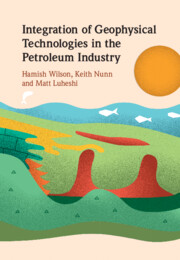Book contents
- Integration of Geophysical Technologies in the Petroleum Industry
- Integration of Geophysical Technologies in the Petroleum Industry
- Copyright page
- Contents
- Contributors
- 1 Introduction
- 2 The Hydrocarbon Exploration Process
- 3 Crustal Seismic Studies
- 4 Gravity and Magnetics
- 5 Full Tensor Gradiometry
- 6 Marine Electromagnetic Methods
- 7 Ocean Bottom Marine Seismic Methods
- 8 Microseismic Technology
- 9 A Road Map for Subsurface De-risking
- Glossary
- Index
- References
5 - Full Tensor Gradiometry
Published online by Cambridge University Press: 25 November 2021
- Integration of Geophysical Technologies in the Petroleum Industry
- Integration of Geophysical Technologies in the Petroleum Industry
- Copyright page
- Contents
- Contributors
- 1 Introduction
- 2 The Hydrocarbon Exploration Process
- 3 Crustal Seismic Studies
- 4 Gravity and Magnetics
- 5 Full Tensor Gradiometry
- 6 Marine Electromagnetic Methods
- 7 Ocean Bottom Marine Seismic Methods
- 8 Microseismic Technology
- 9 A Road Map for Subsurface De-risking
- Glossary
- Index
- References
Summary
The application of gravity gradient measurements to exploration has been growing over the past 20 years. The ability of tensor gradiometry instruments to greatly improve signal/noise when deployed on mobile platforms has transformed the usefulness of this technology. Airborne and marine Full Tensor Gradiometry (FTG) surveys have become an increasingly common part of the exploration and production toolkit. The ability of the modern instruments to provide high-resolution, spatial accuracy and very good signal/noise data has made this technology a more common part of integrated exploration and production management. The technology has a distinct cost advantage over seismic data acquisition and as such can deliver a competitive solution for imaging problems in some circumstances. There are now numerous published examples of effective use of FTG in the oil industry. The development of better instruments such as integration of direct contemporaneous measurement of conventional gravity is encouraging more interest in the technology. The potential for extending the use of FTG to reservoir monitoring and carbon dioxide sequestration assurance is likely to increase the popularity of the technology in future.
- Type
- Chapter
- Information
- Publisher: Cambridge University PressPrint publication year: 2021



